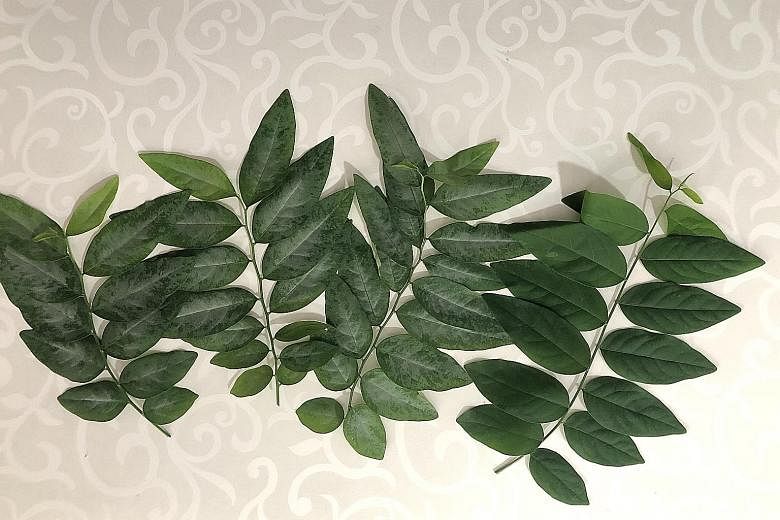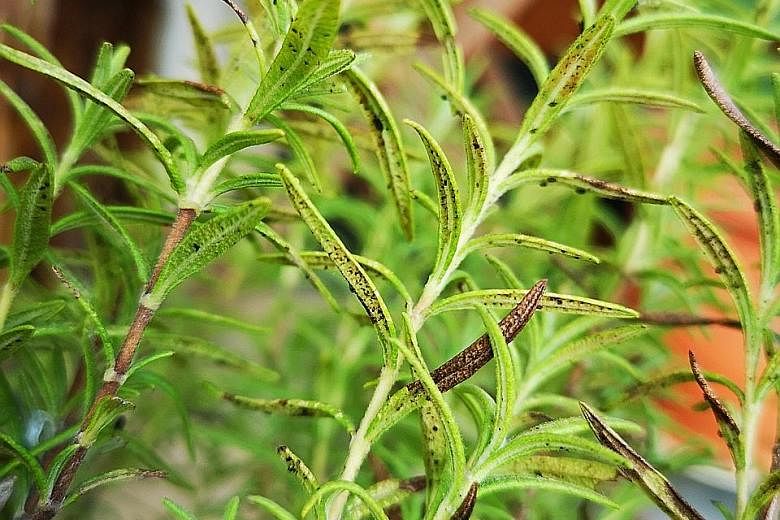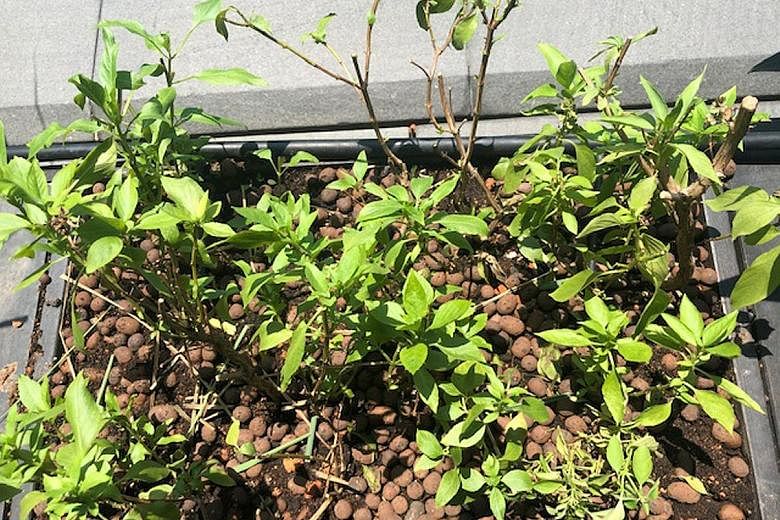Silver patches are natural markings on leaves
Some of my sweet leaves have white patches. What are these patches and are the leaves still edible?
Shannen Soo
The silver patches on your sweet leaf plant (botanical name: Sauropus androgynus), also known as Cekur Manis locally, are natural markings often found on the upper side of the leaves.
As such, the leaves are safe to eat.
Lace bugs attacking rosemary leaves
I have been growing this rosemary for some time, but lately, spots have appeared on the leaves. When I check the underside of the leaves, I find black pests. What are they? What can I do to save the plant or should I throw it away? Also, how can I prevent this issue from recurring?
Elton Wong
Your rosemary plant (botanical name: Salvia rosmarinus) appears to be infested with lace bugs - they look like small, black insects on the leaves. They suck sap from the foliage, which causes it to become spotted. Over time and if the pest population is not managed, the plant can be weakened.
Lace bugs are not easy to manage and the use of chemical pesticides like cypermethrin, available for sale in plant nurseries, will be more effective. Repeated applications are necessary to cull the population.
When you use such pesticides on edible plants, take note of the withholding period, which refers to the duration of time that needs to elapse before plants can be harvested for consumption.
Thai basil plants may need larger containers
My Thai basil plants are not as lush as when I first planted them. I have harvested them a few times and they seem to have difficulty regenerating. What is the problem and how can I get them to grow healthily again?
Ah Lek Tan
Your Thai basil plants (botanical name: Ocimum basilicum) appear rather stressed - the leaves are small and light green and the plants do not seem to grow much.
Check if the container where you grow the plants is large enough to support the growth of so many plants. Thai basil plants grow quickly and their roots can quickly fill the pot. When this happens, nutrients and water are quickly exhausted and the symptoms described will surface.
If the roots have filled the pot, you may want to carefully transplant some of the plants into separate, larger pots to grow in. Otherwise, you can also try to root stem-cuttings to start new plants for succession.
• Answers by Dr Wilson Wong, an NParks-certified practising horticulturist, parks manager and ISA-certified arborist. He is the founder of Green Culture Singapore and an adjunct assistant professor (Food Science & Technology) at the National University of Singapore.
• Have a gardening query? E-mail it with clear, high-resolution pictures of at least 1MB, if any, and your full name to stlife@sph.com.sg. We reserve the right to edit and reject questions.



